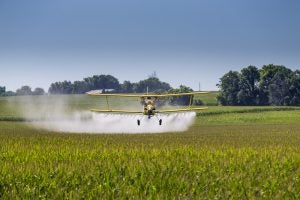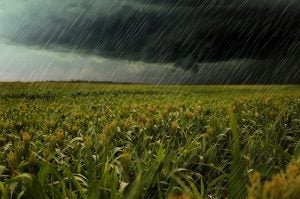For months, the U.S. Environmental Protection Agency has been toying with a vital tool for corn growers: Atrazine. Today, the agency announced a revision to the chemical’s registration that will impose restrictions and measures on the herbicide, limiting farmers’ ability to use the product effectively.
The National Corn Growers’ Association expressed disappointment in the EPA’s decisions, although the EPA has agreed to conduct additional scientific review. Growers and the public may comment on the proposal during the 60-day comment period.
NCGA President Chris Edington said, “We can feed and fuel the world and fight climate change, but we can’t do these things without modern farming tools, and atrazine is a tool that is critical to our work.”
At issue is the aquatic ecosystem concentration equivalent level of concern (CE-LOC). In a published decision that concluded the registration review of atrazine in 2020, the EPA set the atrazine CE-LOC at 15 parts per billion (ppb). Environmental activist groups retaliated with a lawsuit in the Ninth Circuit Court of Appeals. This opened the door for EPA to shift tactics and alter its decision. Today, EPA proposed an ultra-low CE-LOC of 3.4 parts per billion, which would have devastating impacts on farmers.
A group called the Triazine Network, which has been working to fight the decision, accuses the EPA of employing revisionist history, disregarding any sense of transparency, and rejecting a robust body of evidence supporting the 15 ppb, wrote Amanda Zaluckyj in a column for AGDAILY. It also points out that atrazine is an important tool used in no-till and conservation tillage, both of which reduce greenhouse-gas emissions.
In Zaluckyj’s words, “This truly feels like we’re setting a dangerous precedent. If the Triazine Network is correct … the EPA is opening these types of evaluation to the whims of politics. The current agency doesn’t like what the previous agency did under a prior administration with a different political persuasion. But it’s untenable that safety and risk assessments could change every time a new political party controls the White House.”

Growers already face a limited supply of effective and safe herbicides. Atrazine is a triazine herbicide used to control grassy weeds and broadleaf invaders. The chemical affects weed’s ability to practice photosynthesis; it is generally not harmful to humans. Previous regulations on atrazine were set by the EPA and provided safe parameters for the chemical’s use. Registered pesticides are reviewed every 15 years, the next review for atrazine is in 2035.
“To say growers are frustrated is an understatement. The science hasn’t changed since 2020, when EPA set the level of concern at 15 parts per billion. EPA is playing politics with this decision and should not adopt this ultra-low level of concern,” said Greg Krissek, Triazine Network co-chair and Kansas Corn Growers Association CEO. “We are urging farmers to oppose EPA’s regulatory tricks and submit comments to EPA during the 60-day comment period this summer.”
The Triazine Network includes the National Corn Growers’ Association, Grain Sorghum Producers Association, Florida Fruit and Vegetable Association, and others.
Revisions include new measures that will affect farmer’s use of all triazine products in the following situations:
- When soils are saturated
- During rain or storm events
- Prohibits aerial application
- Restricts annual application rates to 2 pounds of active ingredient per acres

Atrazine review timeline:
- In September 2020, the EPA released the original Interim Registration Review Decision for atrazine.
- In October 2020, the EPA received a petition suggesting that the EPA released atrazine’s ID without sufficient evidence.
- In November 2020, the EPA released draft biological evaluations.
- In November 2021, the EPA released the Biological Evaluation
- In December 2021, the Ninth Circuit Court of Appeals issued a voluntary partial remand, giving the opportunity for the EPA to reevaluate their policy decision on atrazine’s allowed level of regulation for aquatic plant communities.
- In June 2022, the EPA released the proposed revisions to the atrazine revisions for public comment.
Farmers rely on effective products to produce yields that allow crops to be grown using fewer resources and environmentally-friendly methods. The use of effective herbicides can reduce greenhouse-gas emissions by limiting the need for tilling.
Atrazine allows farmers to increase resources to crop plants by eliminating weeds that utilize nutrients, water, and other resources that crops need to grow.
Atrazine is primarily used on corn, sorghum, and sugarcane crops, although it is also used on wheat, macadamia nuts, and guava. It is also registered for use on nursery ornamentals and turf.
Before any part of this proposal is implemented, the EPA must stand by its promises to convene a formal FIFRA Scientific Advisory Panel to specifically explore the scientific basis for the proposed CE-LOC revision and ensure high-quality research supports the proposal.


